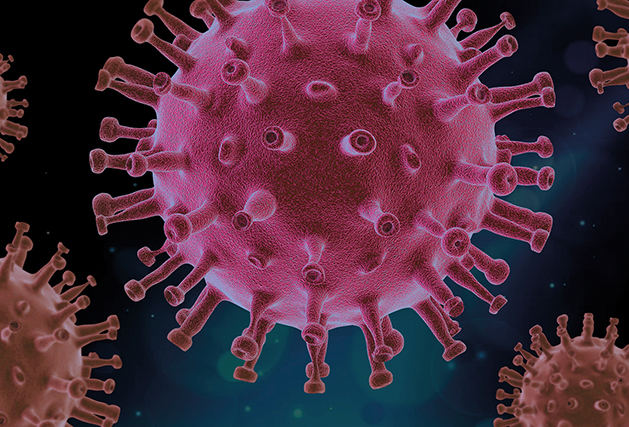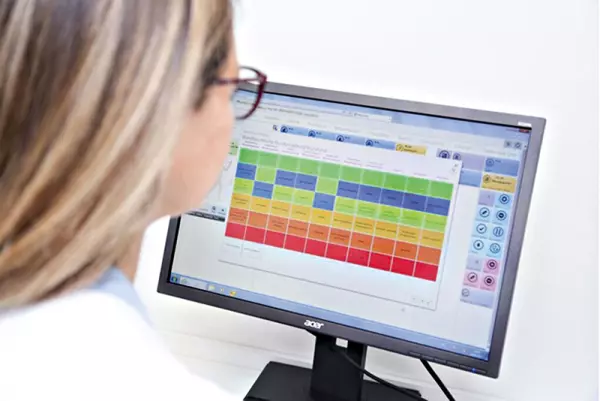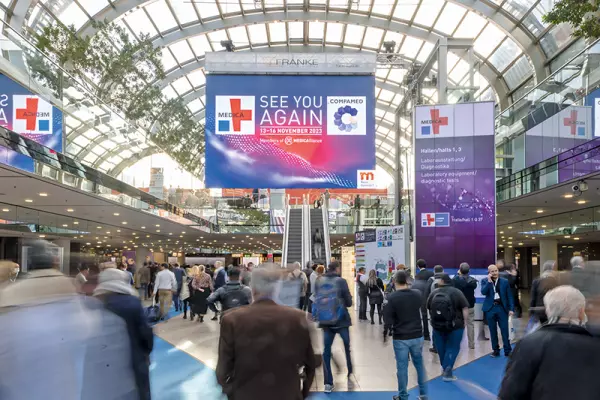
(06/2020) by Rüdiger Kramme
An unknown challenge has been spreading pandemically since the end of 2019: a new variant of the coronavirus (2019-nCoV, SARS-CoV-2), which not only triggers respiratory diseases - from a cold to pneumonia to more serious diseases such as SARS - but also affects the cardiovascular and nervous systems as well as the kidneys.
In just under 5 percent of the sick patients, the shortness of breath leads to a life-threatening condition, which makes intensive medical therapy inevitable. According to the WHO, 6.1 percent of Covid 19 patients die worldwide. The demand for ventilators for Covid-19 patients has increased by leaps and bounds, so that even automobile manufacturers or heating engineers produce simplified ventilators or parts in 3-D printing, as the capacities of the original ventilator manufacturers cannot meet the current demand. According to experts, there is a shortage of 300,000 to 700,000 ventilators in the USA alone.
Pandemic virus
The new and complex disease generated by the new coronavirus (Latin: corona: wreath-shaped structure, vertex, vertebra), 2019-CoV or SARS-CoV-2 for short, is referred to as Covid-19 (Coronarvirus disease 2019). The infection is mainly transmitted airborne via droplets and less via a smear infection. The virus (lat. Virus: mucus, poison, juice) is an RNA virus with a shell and embedded membrane proteins (ribonucleic acid: macromolecule that plays a central role in protein synthesis) in a defined particle shape (virion) with a variable diameter between 60 nm and 140 nm (nm = 10-9, one billionth of a meter). The intensity of the outbreaks, the virulence (Latin virulentia: stench, poison) of the virus, which describes the infectious power and the strain-specific properties, as well as the worldwide spread suggest that the new variant of SARS (acute severe respiratory syndrome, severe acute respiratory syndrome: infectious disease of the upper respiratory tract with a high rate of spread and death) is not a cause of so-called trivial colds. While about 80 percent of those infected with nCoV-19 show no or mild symptoms, about 14 percent suffer from dyspnoea of various degrees with pneumonia-like symptoms. It was observed that up to 50 percent of Covid-19 sufferers who had to be hospitalized and had existing underlying diseases such as high blood pressure, arteriosclerosis, heart disease, etc., had a severe disease.
Respiratory system
The main task of lung function is to ensure efficient and effective gas exchange through breathing, with oxygen being taken up and carbon dioxide being given off. The respiratory system consists of the upper airway (nose, throat), the lower airway (larynx, trachea, bronchial space and lungs), the mechanical system (diaphragm, chest muscles, auxiliary respiratory muscles) and the respiratory center in the medulla oblongata. A further subdivision is made into a breathing gas-conducting system (upper airways, throat) and a breathing gas-exchanging system (alveoli). The number of alveoli is around 300 million with a total surface area of 50–100 m². The mucociliary transport system (mucous membrane with cilia that clean the respiratory tract of coarser particles) is located in the lower or deep airway as a self-cleaning device. In many respiratory diseases, this biological mechanism is disturbed or even inoperable. There is an increased production and retention of bronchial secretions (mucus) with thickening (crust formation).
Hypoxemia, ARDS, ARI
The term hypoxemia describes the reduced oxygen content of the arterial blood. According to a Chinese study (January 2020) published in the medical journal “Lancet”, around 5 to 6 percent of all Covid-19 patients had severe hypoxia that required invasive or non-invasive ventilation. The primary goal of acute treatment is to eliminate the hypoxemia by supplying oxygen via a nasogastric tube, oxygen cannula or a venturi face mask (see below). The acronym ARDS (acute respiratory distress syndrome) is understood to mean acute, severe pulmonary impairment as a typical lung reaction to various pathogenic causes. ARDS is characterized by severe dyspnea, tachypnea, cyanosis despite O2 supply, reduced lung compliance and bilateral diffuse infiltrations in all lung areas. The therapy usually consists of mechanical ventilation. Typical complications in the course of a Covid-19-ass









